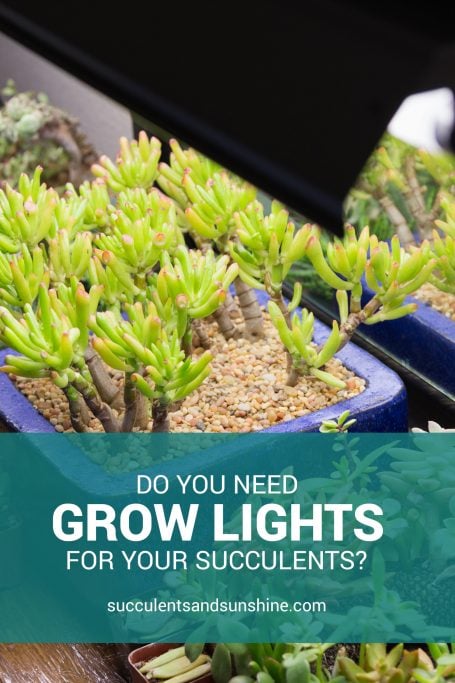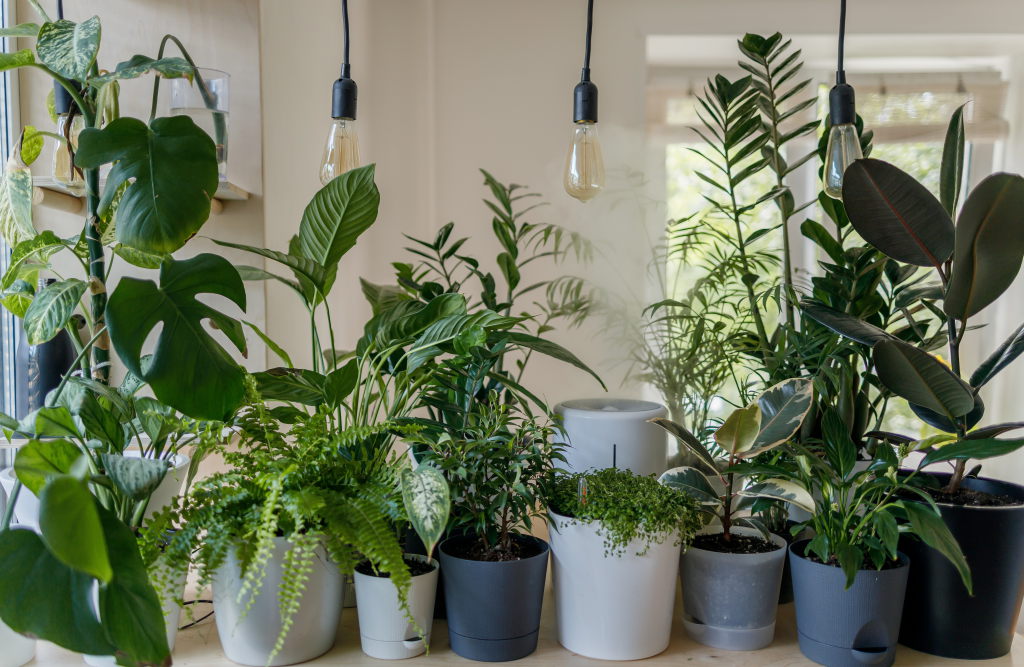Learn about the items needed to keep your succulents healthy and vibrant with the use of grow lights during the winter.
When you buy something via a link on this website, we may be compensated for it without charging you any extra. This helps us give you free content to use.
Recently, I have been inundated with inquiries concerning the use of grow lights for succulents. I have been doing my own research on this topic with regards to the succulents I have in my house. I have discovered a great deal of data, but it has been difficult to comprehend what it all signifies and what I require.
My objective with this post is to provide a straightforward response to the queries “Do I need grow lights?” and “What grow lights should I purchase?”
You can make caring for succulents simpler by downloading a useful guide. With this cheat sheet, you can quickly determine which grow lights are best for your plants. Click here to obtain the cheat sheet and start enjoying the benefits it offers.
Table of Contents
Do succulents need grow lights indoors during the winter?
If you have a window that gets low light, you may want to consider setting up some artificial lighting to help supplement the sunlight.
If succulents don’t receive enough light, they may begin to elongate and their vivid hues and rounded contours may be lost. Even though they are alive and healthy, they still crave more light. During the winter, when the days are shorter, succulents may start to stretch.
A grow light can be beneficial for keeping succulents looking vibrant and healthy. It can provide extra brightness during the day, which can be especially beneficial during the winter months. I’ve tried growing succulents indoors without a grow light, and while they weren’t in bad shape, I noticed that by the time spring came around, a lot of them had grown longer than usual. To fix this, I trimmed them back and re-planted them before moving them outside.
I have made the determination to keep my succulents from becoming leggy this year, so I have purchased some grow lights to achieve this.
How long should I leave grow lights on in the winter?
Succulents growing indoors won’t enter a period of inactivity unless it is triggered by changes in temperature and light.
My indoor succulents need 12-14 hours of light each day, which resembles the amount of daylight they would receive outdoors. This is supplemented with a few extra hours to ensure they remain healthy and in a strong growth cycle. However, I still make sure they get at least six hours of darkness each day.
This post provides guidance on how much water your plants will need at different times of the year.
What grow lights should I buy?
I had difficulty understanding all the information about grow lights, like what kind to use, the intensity of the light, the color, the distance from the plant, etc. It was confusing trying to figure out what it all meant for me.
Don’t forget that you can get a complimentary cheat sheet that outlines the best grow lights.
After reading several helpful articles, consulting with experienced succulent growers, and considering all the information I have gathered, I have come to the following conclusions about succulent care.
- What type of light should I use for my succulents? My personal recommendations and examples are available on Amazon; they do not need to be labeled as “grow lights” and can simply be regular fluorescent or LED bulbs. The best choice of color light is in the “daylight” spectrum, preferably with a color temperature of 5000-6500K. The lights should be placed about 12 inches away from the top of the succulents. The number of lights required will depend on the number of plants and may require some trial and error.
The two main objectives of these suggestions are to be cost-effective and efficient. While there are more expensive options that may be more effective, fluorescent lights are a good option as they are easily accessible and do the job well.
I have compiled a guide on setting up a grow light system, outlining the necessary steps and how easy it is to implement.
This temperature provides a warmer light, with more red than blue.
I encountered two perplexing questions when considering grow lights: what color of light and how much light. Many people discuss the benefits of red and blue light. If you want to recreate natural daylight, then 6500K daylight temperature provides a blue light. For flowering plants, 3000K bulbs offer a warmer light that has a higher concentration of red than blue.
If you’re looking for helpful advice on grow lights, Epic Grow Lights is a great place to start. They have an enormous selection of information and offer clear explanations on the topic.
The quantity of light necessary for your plants is slightly more complicated. It would be best to get as much light as you can. If possible, aim for all your plants to have light shining directly above them. If the space is limited, this might not be achievable; however, if the space is 1 foot by 4 feet, the light should be roughly the same size.
I have placed my collection of plants on my 1×4 foot dresser in my bedroom, and to ensure that the plants get adequate amounts of light, I decided to purchase a 4-foot-long light fixture with 4 T8 bulbs that are 32 watts each. This space also receives some natural daylight and the mirror behind the dresser helps to reflect the light. We’ll see if it works out! I have received positive feedback from other succulent lovers who have assured me that the light provided should be enough.
I opted to buy my lights locally so I could install them immediately; however, if you have the patience to wait, ordering online may be a more cost-effective choice. I chose T8 bulbs since T5s are more efficient, but I couldn’t find them in my vicinity. Nevertheless, the T8s I bought should do the job.
If you’re limited on space and need to grow indoors, a Compact Fluorescent Light (CFL) bulb would be a better choice than a long tube. These spiral shaped bulbs easily fit into a regular light fixture, and I discovered some great deals for both the bulbs and the reflector (fixture) on Amazon.
How much does it cost to use grow lights?
People often ask me how much it costs to keep my grow lights running for 13 hours a day, every day of the year. In this video, I’ll explain the cost of running my walnut grow light plant stand that my husband built for me.
Using grow lights is a good way to add to the natural light your succulents receive, especially during the winter. Taking care of succulents indoors can be tough, but having fluorescent grow lights can give your plants a boost and won’t cost a lot.
If you’re looking for a top-notch grow light resource, Epic Grow Lights is your go-to. Don’t forget to take advantage of their free grow light cheat sheet while you’re there.
FAQ
How do I know if I need a grow light?
Plants that lack fullness, have long stems with few leaves, have spaced out leaves, or have foliage only at the end of the stem may require more light to promote healthy growth.
Can a white LED light be used as a grow light?
When utilizing “full spectrum” white LEDs, the efficiency loss of up to 40% can result in them being less than half as efficient for growing plants as the appropriate combination of pure-color LEDs. This means that the same cooling requirements of HPS and MH lights must be employed, essentially eliminating any of the other advantages LEDs may have offered.
Can any LED light be used as a grow light?
As a result, you might need to supplement regular LEDs with a higher powered light source, such as a fluorescent or HID light, in order to ensure the plants receive enough light to grow and flower properly.
Do plants need certain light to grow?
If you don’t have access to natural light, you can still have healthy plants by choosing species that are suited to the light levels in your home or office. There are many artificial lighting options available that can help to supplement the light levels in your space, in various shapes and sizes to fit your budget and needs.


